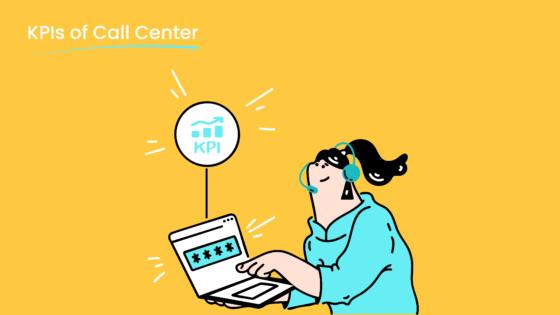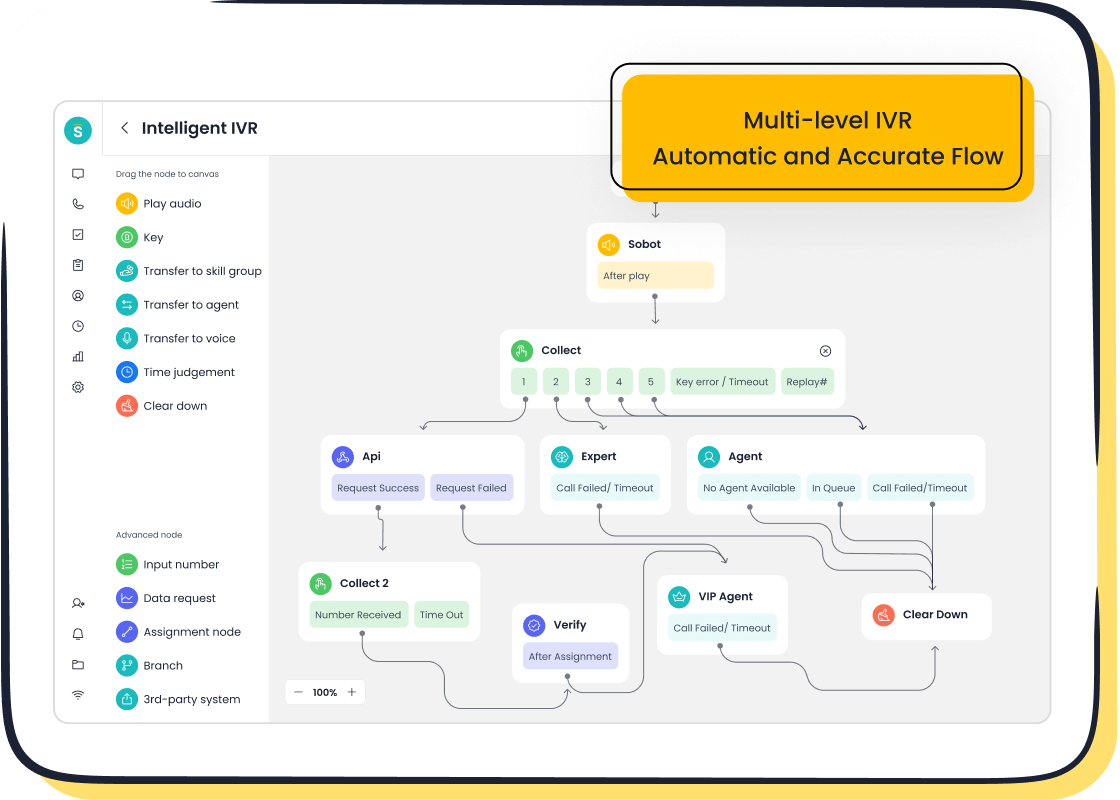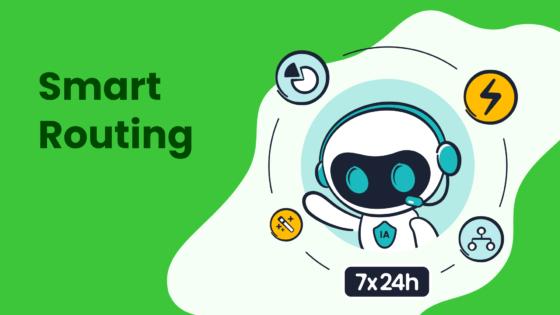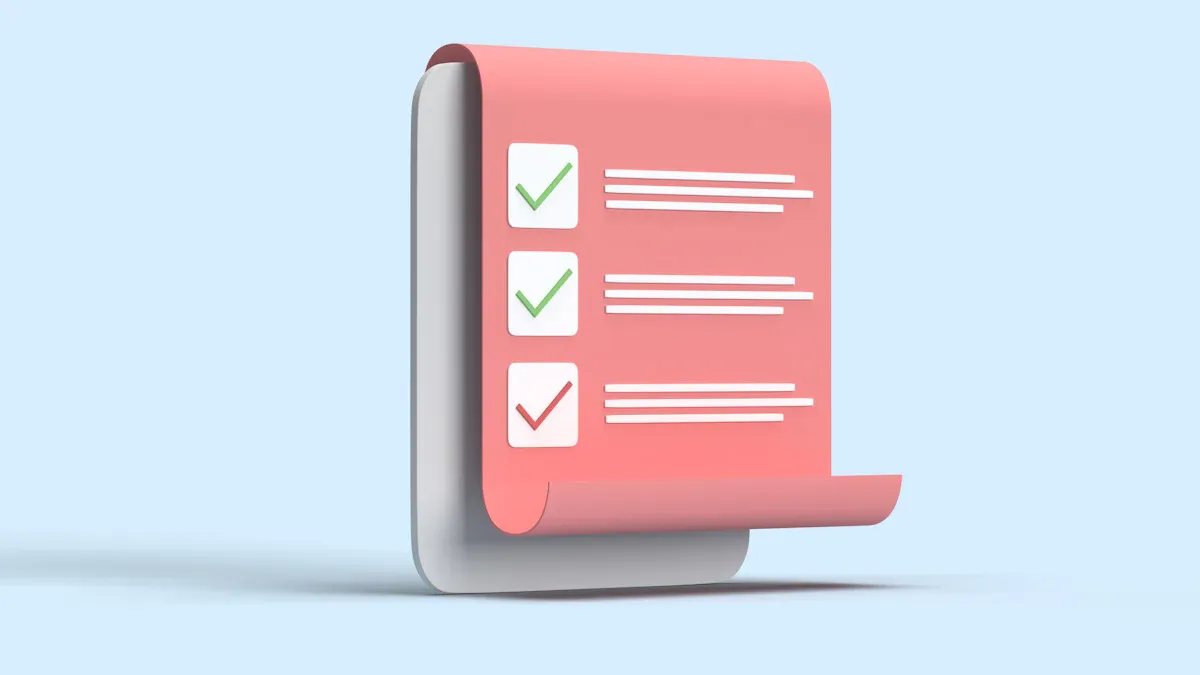Understanding KPIs for better customer service outcomes

Key performance indicators (KPIs) are measurable values that help you evaluate the effectiveness of your customer service efforts. They provide a clear picture of how well your team meets customer expectations. For example, tracking metrics like average resolution time or first contact resolution (FCR) can reveal areas for improvement. A 10% reduction in resolution time often boosts customer satisfaction, while a 1% increase in FCR directly enhances satisfaction rates.
KPIs for customer service are essential for improving outcomes. They help you identify inefficiencies, enhance team performance, and align service goals with business objectives. Tools like Sobot's solutions simplify KPI tracking, enabling you to focus on delivering exceptional service. By leveraging KPIs effectively, you can foster loyalty, improve operational efficiency, and achieve long-term success.
What are KPIs for customer service teams?
Definition and purpose of KPIs in customer service
Key performance indicators (KPIs) are essential tools for measuring progress toward specific goals in customer service. They help you evaluate how well your team meets customer expectations and aligns with business objectives. For example, tracking metrics like first response time or customer satisfaction score can reveal how effectively your team resolves issues and satisfies customers.
| Definition | Core Purpose |
|---|---|
| A key performance indicator (KPI) is a measurement that gauges the progress of a company toward reaching its organizational and strategic goals. | KPIs help managers and stakeholders determine if the company is on the right course in meeting its set targets and guide strategic decisions. |
In customer service, KPIs provide actionable insights. They allow you to identify inefficiencies, improve team performance, and enhance the overall customer experience. Tools like Sobot's Voice/Call Center make it easier to track and analyze these metrics, ensuring your team stays on the right path.
Examples of customer service KPIs and their applications
Customer service KPIs come in many forms, each serving a unique purpose. Here are some common examples:
| KPI Name | Description |
|---|---|
| Average resolution time | Measures how quickly your team resolves customer issues. |
| First response time | Tracks how fast your team responds to customer inquiries. |
| First contact resolution | Indicates the percentage of issues resolved in the first interaction. |
| Customer satisfaction score | Reflects how well your service meets customer expectations. |
| Tickets handled per hour | Shows how many tickets an agent manages within an hour. |

For instance, reducing average resolution time can lead to higher customer satisfaction. Similarly, improving first contact resolution rates often boosts loyalty. Sobot's solutions, such as its AI-powered Voicebot, help streamline these processes by automating repetitive tasks and providing real-time insights.
Differentiating between leading and lagging KPIs
Understanding the difference between leading and lagging KPIs is crucial for effective performance tracking. Leading KPIs predict future outcomes, while lagging KPIs measure past results.
| Indicator Type | Description | Characteristics |
|---|---|---|
| Leading | Predicts future outcomes | Proactive, focuses on processes, requires interpretation |
| Lagging | Measures past results | Reactive, quantifies outcomes, provides objective data |
For example, first response time is a leading KPI because it predicts customer satisfaction. On the other hand, customer satisfaction score is a lagging KPI as it reflects past performance. By combining both types, you can create a balanced approach to improving customer service metrics.
Why are customer service KPIs important?
Enhancing team performance and operational efficiency
Customer service KPIs play a vital role in improving how your team operates. By tracking metrics like average handle time or first contact resolution rate, you can identify inefficiencies and streamline processes. For example, monitoring first response time helps you ensure that agents respond to inquiries promptly, reducing customer wait times. This not only boosts productivity but also enhances the overall customer experience.
Operational metrics such as efficiency and productivity provide valuable insights into your team's performance. For instance:
| Metric Type | Description |
|---|---|
| Efficiency | Measures how well processes are performed, e.g., units handled per day. |
| Productivity | Evaluates output relative to input, e.g., tickets resolved per hour per agent. |
| Quality | Assesses service standards, e.g., first-attempt resolution rates. |

Using tools like Sobot's Voice/Call Center, you can centralize these KPIs in a unified dashboard. This allows you to monitor real-time performance and make data-driven decisions to improve efficiency.
Driving customer satisfaction and loyalty
Tracking customer service KPIs directly impacts satisfaction and loyalty. Metrics like customer satisfaction score (CSAT) and customer effort score (CES) reveal how well your service meets expectations. For example, reducing average resolution time often leads to happier customers, while improving first contact resolution builds trust and loyalty.
Companies like Starbucks have successfully used KPIs to enhance customer engagement. By analyzing data from their loyalty program, they improved both operational efficiency and customer satisfaction. Similarly, Sobot's AI-powered solutions, such as its Voicebot, help automate repetitive tasks, allowing agents to focus on complex issues. This ensures faster resolutions and a better customer experience.
Aligning customer service goals with business objectives
Key performance indicators align your customer service goals with broader business objectives. They provide a clear framework for measuring success and ensuring that your team contributes to the company's strategic vision. For example, tracking KPIs like customer retention rate or cost per resolution helps you balance customer satisfaction with operational costs.
Research shows that aligning KPIs with business strategy drives sustainable growth. Misaligned KPIs, on the other hand, can lead to wasted efforts and missed opportunities. Sobot's omnichannel solutions help bridge this gap by integrating customer interactions across platforms, ensuring your service goals support your overall business strategy.
Pro Tip: Regularly evaluate your KPIs to ensure they remain relevant and aligned with your evolving business objectives.
Key categories of KPIs for customer service teams

Team performance metrics (e.g., average handle time, first response time)
Team performance metrics measure how efficiently your customer service team operates. These metrics focus on the speed and quality of issue resolution, helping you identify areas for improvement. For example, average handle time (AHT) tracks the time agents spend resolving customer issues. A shorter AHT often correlates with higher customer satisfaction, as quicker resolutions reduce customer effort. Monitoring first response time ensures your team addresses inquiries promptly, which enhances the overall customer experience.

Using tools like Sobot's Voice/Call Center, you can track these metrics in real-time. Features like intelligent IVR and smart call routing streamline workflows, reducing AHT and improving first response time. This not only boosts team efficiency but also enhances customer service quality.
Pro Tip: Regularly review team performance metrics to identify high-performing agents and areas needing additional training.
Customer satisfaction metrics (e.g., CSAT, Net Promoter Score)
Customer satisfaction metrics evaluate how well your service meets customer expectations. The customer satisfaction score (CSAT) measures satisfaction with specific interactions, while the Net Promoter Score (NPS) gauges customer loyalty by asking how likely they are to recommend your service. Both metrics provide actionable insights into customer service quality.
For instance, CSAT surveys can reveal pain points in your service process, allowing you to make targeted improvements. NPS, on the other hand, offers a broader view of customer loyalty. Sobot's omnichannel solutions simplify the collection of these metrics by integrating customer interactions across platforms. This ensures you capture accurate data and make informed decisions to enhance satisfaction.
Did you know? Companies with high NPS scores are 60% more likely to retain customers, driving long-term business success.
Business-level metrics (e.g., customer retention rate, cost per resolution)
Business-level metrics align customer service goals with broader organizational objectives. Metrics like customer retention rate and cost per resolution provide insights into the financial impact of your service efforts. Retaining customers is significantly more cost-effective than acquiring new ones. In fact, increasing customer retention by just 5% can boost profits by 25-95%.
Sobot's solutions, such as its AI-powered Voicebot, help reduce operational costs by automating repetitive tasks. This lowers the cost per resolution while maintaining high service quality. Additionally, features like real-time analytics enable you to monitor customer retention rates and adjust strategies as needed.
Fact: 71% of customers leave a company due to poor service. Prioritizing customer retention through excellent service can significantly improve your bottom line.
How to set and measure customer service KPIs effectively

Identifying the right KPIs for your team
Choosing the right performance indicators for your customer service team ensures you focus on what truly matters. Start by aligning metrics with your company’s goals. For example, if your objective is to improve customer retention, tracking metrics like Customer Satisfaction Score (CSAT) and Net Promoter Score (NPS) can provide valuable insights. Involving your agents in the KPI selection process also fosters engagement and ensures the metrics are practical for daily operations.
Consider tracking core service desk KPIs such as First Contact Resolution Rate (FCR) and Customer Effort Score (CES). These metrics highlight areas where your team excels and where improvements are needed. Analyzing ticket volume and response times can also help you allocate resources effectively, ensuring your team meets customer expectations.
Tip: Regularly review your KPIs to ensure they remain relevant as your business evolves.
Leveraging tools like Sobot's Voice/Call Center for KPI tracking
Using advanced tools simplifies the process of tracking and analyzing KPIs. Sobot's Voice/Call Center offers features like real-time monitoring, intelligent IVR, and AI-powered Voicebot, which streamline workflows and enhance efficiency. For example, automation reduces response times, while smart call routing ensures customers connect with the right agent quickly.
| Benefit | Description |
|---|---|
| Improve Efficiency | Automation and AI reduce response times, maximizing productivity. |
| Streamline Problem-solving | Enables effective ticket creation and management. |
| Personalized Customer Experience | AI-powered chatbot delivers faster, tailored interactions. |
| High Satisfaction Rates | Over 80% of answers are correct, with 95% customer satisfaction reported. |
By leveraging these tools, you can track metrics like first response time and cost per resolution in real-time, ensuring your team stays on track to meet its goals.
Analyzing and acting on KPI data for continuous improvement
Collecting KPI data is only the first step. To achieve the best practices for achieving customer service KPIs, you must analyze the data and take actionable steps. For instance, if your CSAT scores indicate dissatisfaction with resolution times, consider implementing training programs or optimizing workflows. Similarly, a low FCR rate might suggest the need for better agent resources or improved knowledge bases.
Sobot's solutions provide detailed analytics that help you identify trends and areas for improvement. For example, its unified workspace consolidates customer data, making it easier to pinpoint inefficiencies. By acting on these insights, you can enhance both team performance and customer satisfaction.
Pro Tip: Use historical data to set realistic benchmarks and track progress over time.
Best practices for using customer service KPIs
Avoiding KPI overload and focusing on key metrics
Tracking too many KPIs can overwhelm your team and dilute focus. Instead, prioritize a few critical metrics that directly impact performance. For example, focusing on first response time and customer satisfaction score can provide a clear picture of your service quality. This approach prevents "analysis paralysis," where excessive data hinders decision-making.
Adopting the "less is more" principle helps you streamline efforts. Choose the minimum number of KPIs necessary to achieve your objectives. Tools like Sobot's Voice/Call Center simplify this process by automating data collection and reporting. This allows you to focus on improving customer service quality without getting bogged down by unnecessary metrics.
Tip: Regularly review your KPIs to ensure they remain relevant to your goals and adapt as your business evolves.
Ensuring data accuracy and consistency in measurement
Accurate and consistent data is essential for reliable KPI tracking. Inconsistent measurements can lead to flawed insights and poor decisions. For instance, a global retail chain standardized its data formats and reduced shipping errors by 42%, saving $2.3 million annually. You can achieve similar results by implementing enterprise-wide data standards and using automated validation tools.
Sobot's solutions, such as its unified workspace, help ensure data consistency by consolidating customer interactions across channels. Regular audits and calibration sessions for agents also promote uniformity in how KPIs are measured. These practices enhance the reliability of your data, enabling you to make informed decisions that improve service quality.
Pro Tip: Establish clear data governance policies to maintain accuracy and consistency across all systems.
Using KPIs to motivate and engage customer service teams
KPIs can inspire your team when used effectively. Involve agents in setting goals to foster a sense of ownership. For example, defining both individual and team KPIs helps employees understand their roles and responsibilities. Recognizing achievements, such as meeting a target for first contact resolution, boosts morale and encourages continuous improvement.
Access to real-time data also keeps your team engaged. Sobot's Voice/Call Center provides live performance dashboards, allowing agents to track their progress. This transparency motivates them to meet or exceed expectations. Additionally, aligning KPIs with customer needs ensures your team stays focused on delivering exceptional service.
Did you know? Teams equipped with the right tools and clear goals are more likely to achieve high customer satisfaction scores.
Key performance indicators (KPIs) are essential for achieving better customer service outcomes. They enhance the customer experience by monitoring satisfaction and identifying areas for improvement. Aligning KPIs with business objectives ensures effective performance measurement and strategic adjustments. Tools like Sobot's Voice/Call Center simplify KPI tracking, offering real-time insights and automation to improve efficiency.
- KPIs help retain customers and attract new ones.
- They guide data-driven decisions for continuous improvement.
- Proactive KPI use strengthens competitive advantage and business success.
By leveraging KPIs effectively, you can foster loyalty, optimize operations, and drive long-term growth.
FAQ
What are the most important KPIs for customer service teams?
Focus on KPIs like first response time, customer satisfaction score (CSAT), and first contact resolution (FCR). These metrics measure efficiency, satisfaction, and resolution quality. Tools like Sobot's Voice/Call Center help you track these KPIs in real-time, ensuring your team delivers exceptional service.
Tip: Prioritize KPIs that align with your business goals for maximum impact.
How can you improve your team’s KPI performance?
Use tools like Sobot's AI-powered Voicebot to automate repetitive tasks and reduce response times. Provide regular training to your team and analyze KPI data for actionable insights. For example, improving FCR often requires better knowledge bases and smarter call routing.
Fact: Companies using AI tools report a 30% increase in efficiency.
Why is tracking customer satisfaction KPIs essential?
Customer satisfaction KPIs like CSAT and Net Promoter Score (NPS) reveal how well your service meets expectations. High scores indicate loyalty and trust. Sobot's omnichannel solutions simplify data collection, helping you identify pain points and improve service quality.
Did you know? A 5% increase in customer retention can boost profits by up to 95%.
How does Sobot simplify KPI tracking?
Sobot's Voice/Call Center offers real-time monitoring, intelligent IVR, and unified dashboards. These features streamline KPI tracking, allowing you to focus on improving customer interactions. For example, you can monitor first response time and cost per resolution effortlessly.
Pro Tip: Use Sobot's analytics to set realistic benchmarks and track progress.
What’s the difference between leading and lagging KPIs?
Leading KPIs predict future outcomes, like first response time. Lagging KPIs measure past results, such as customer satisfaction scores. Combining both types provides a balanced view of performance. Sobot's tools help you track and analyze both effectively.
Example: Faster response times (leading KPI) often result in higher CSAT scores (lagging KPI).
See Also
10 Strategies To Enhance Live Chat Customer Experience
Enhancing Call Center Efficiency Through Effective Monitoring
Top Practices For Quality Management In Call Centers